It’s not for nothing that they say that the eyes are the mirror of the soul. And no matter how trivial it may sound, this mirror should have a beautiful frame. Unfortunately, with age, our muscles and skin lose tone, gradually sagging and forming wrinkles on the face. However, we have found a solution that will help solve the problem quickly and effectively. Its name is blepharoplasty. Let's take a closer look at what it is and ask the expert questions that concern everyone.
What is blepharoplasty and its types
Blepharoplasty is a surgical procedure that allows you to correct the shape of the eyelid by excision of excess skin, removal of fat deposits and tightening of muscles. Thanks to this operation, patients completely forget about drooping eyelids, acquiring an open look.
It is worth noting that this type of surgery is in demand among patients of different age categories. Middle-aged people, thanks to blepharopastics, cope with the emerging age-related changes and “shed” ten years at a time. And young patients often turn to specialists to slightly correct the structure of their eyelids.
The doctor independently determines what the patient needs, based on his wishes. There are four types of such operations in total, each of which we will analyze separately.
Lower eyelid surgery is suitable for those patients who are bothered by so-called “bags” under the eyes or deep folds in this area. It also helps get rid of bruises, swelling and other imperfections that make the look heavier.
This type is performed in three ways:
- Classic look - a small incision is made along the edge of the eyelash growth, which after the rehabilitation period becomes almost invisible.
- Laser type - this method leaves virtually no traces and reduces tissue restoration time to a minimum. Even the swelling that appears after the operation disappears in the coming days. The patient himself does not experience any discomfort either during or after the operation.
- Transconjunctival type - such operations are performed using small punctures on the inside of the eyelid. The big advantage of this type is the complete absence of stitches and quick rehabilitation. However, the doctor will determine for himself whether this method is suitable for you or not.
Upper eyelid surgery is suitable for those who want to correct age-related changes, sagging skin and regain their normal viewing angle. Here, not only additional excision of excess skin is performed, but also the muscle of the eyelid itself is tightened to consolidate the result.
In addition, there are also circular and transconjunctival blepharoplasty. The first type involves simultaneous correction of the shape of both the upper and lower eyelids, and the second type is carried out for young patients who do not yet have excess skin and wrinkles, but have excess fat in the eyelid area.
When can you have blepharoplasty?
The eyes reveal your real age, so surgical correction makes it possible to significantly improve your appearance.
This procedure is mainly in demand among middle-aged patients. The first signs of age-related changes are wrinkles and bags under the eyes, which make a person look older. Sometimes this procedure is required at a younger age if there is an anatomical predisposition to the formation of sagging and hernias.
Indications for blepharoplasty are:
- ptosis and bags under the eyes;
- fine and deep wrinkles;
- tired look;
- desire to correct defects on the eyelids;
- desire to change the shape or shape of the eyes;
- drooping corners of the eyes.
When deciding whether to have blepharoplasty, it is worth considering that the later you go for correction, the more noticeable the scars will be. If there are fatty hernias, but the skin is elastic, the operation will not leave any marks. How many times blepharoplasty can be done is determined by a specialist. However, it is important to remember that the period between operations must be at least seven years.
How the operation is performed
To begin with, the patient is examined by a doctor. He prescribes the necessary tests to make sure there are no contraindications. The examination may take about three days, after which the day of the operation itself arrives.
The duration of the procedure depends on the type of surgery. But on average it takes from 30 minutes to two hours. In this case, the doctor can use both general anesthesia and local anesthesia. The rehabilitation period lasts approximately three days, after which the patient can go home.
If the surgeon applied stitches, they are removed on the fourth or fifth day. Bruises and swelling disappear after 10 days, and after two weeks the patient is allowed to wear light makeup. The final result appears after a couple of months, when swelling and inflammatory processes in the tissues completely disappear. But it is still worth noting that the effect and all risks depend solely on the characteristics of the body. Therefore, it is important to conduct a thorough examination before surgery.
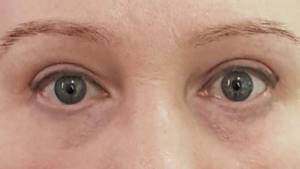
Contraindications
With a question about contraindications, we turned to the manager of the Institute of Plastic Surgery on Tsvetnoy Boulevard in Moscow, Ksenia Delnik . According to her, tests are required before any surgical intervention. This will allow doctors to exclude the presence of serious diseases and existing risks to the patient’s health.
Expert comment:
“There is a so-called hospital complex, it is familiar to all laboratories and any clinic. There is a certain range of tests that, according to the protocol for any operation, must be taken so that the entire operating team understands what is happening in the patient’s body.”
According to her, based on the results of the examination, doctors must make a conclusion about the presence of any infections and inflammatory processes, determine the level of hemoglobin, pay attention to blood clotting and the presence of chronic diseases. If necessary, additional tests are prescribed from other specialists, who approve the operation and eliminate all existing risks. Delnik emphasized that any patient, regardless of age, must undergo an electrocardiography procedure.
The specialist denied the information that everyone who wants to undergo plastic surgery is sent for a forced consultation with a psychiatrist. As it turned out, this is done only in doubtful cases when the patient does not care at all about the aesthetic part of his appearance.
Delnik spoke about the existing contraindications with which the operation is strictly prohibited. Among them:
- pregnancy;
- lactation period;
- oncological diseases;
- any chronic diseases in acute form.
Patients with high blood pressure and diabetes are at risk. Therefore, after reviewing the test results, the surgeon himself decides whether blepharoplasty can be performed on such a patient.
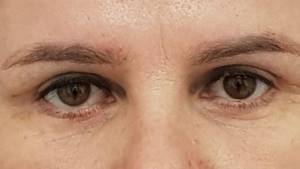
How to choose the right specialist
If everything is clear with blepharoplasty techniques and contraindications, then how can you choose a competent specialist who will do the job in the best possible way and will not harm your health? According to Ksenia Delnik, in our time, the patient has every right to request from the doctor all the necessary documents confirming the availability of medical education and certificates in plastic surgery. She recommended paying special attention to certificates so as not to run into a surgeon who takes on any work without having any skills in this area.
What can replace blepharoplasty?
An alternative to blepharoplasty involves some procedures, but they will not help remove excess fat from the eyelids or remove bags under the eyes. These alternative methods are as follows:
- Peeling.

You can replace surgical intervention with glycolic peeling, which will significantly rejuvenate the skin of the face. But you should understand that blepharoplasty cannot make your skin different, and even more so, it will not help solve the problem with expression wrinkles. Blepharoplasty is a simple process of tightening the skin, so the older the skin becomes, the less noticeable the effectiveness of plastic surgery becomes. Therefore, sometimes the objective option is to use peeling, which will rejuvenate the skin. - Lifting.
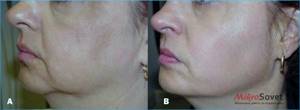
This procedure is the best alternative to blepharoplasty, as it allows you to tighten your facial skin and get a good result. Sometimes lifting and blepharoplasty can be performed in a complex manner, but after a certain period of time.
Expert advice
“There is a requirement from Rospotrebnadzor that on the websites of clinics that provide plastic surgery services, each surgeon has these documents freely available in the “Education” column,” stated FAN’s interlocutor.
The specialist answered a question about the eyelid lifting procedure using laser treatment, which is gaining popularity among cosmetologists. According to her, the laser literally “evaporates” the skin, provoking the production of its own collagen and elastane. It is these substances that help thicken the skin in problem areas. However, the expert explained that cosmetology is still unable to correct age-related changes in the eyelids.
Important
“If the patient already has a sufficient amount of excess skin in the eyelid area, then it is impossible to correct it cosmetically so that the result lasts for at least six months. There is no such technique. Cosmetology will not remove excess skin, but it can definitely prolong youth and correct mild age-related changes,” the specialist explained.
Delnik emphasized that procedures from a cosmetologist will not be able to tighten the eyelid muscle or rid the patient of excess skin that interferes with the viewing angle. Therefore, if there are irreversible age-related changes, you should contact not cosmetologists, but qualified plastic surgeons.
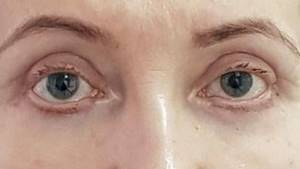
Can hardware techniques replace plastic surgery?
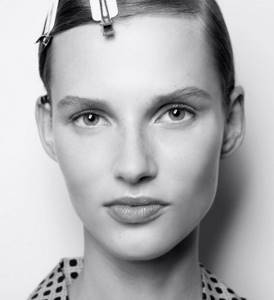
The confrontation between ultra-modern devices and the surgeon’s scalpel will exist forever: even in the process of writing this text, it became clear that every doctor (not just an ordinary patient!) has his own opinion on this matter. Therefore, never look for easy ways - the search for that very technique can take months. Well, in the meantime, we decided to choose three non-invasive procedures and asked experts to tell us whether they can really become a replacement for plastic surgery.
- One of the most popular plastic surgeries in the world is blepharoplasty. For an experienced surgeon, it does not pose any difficulty, but rehabilitation in any case takes more than one month - you cannot immediately go to the office or a business meeting. Therefore, in this sense RecoSMa : this is a laser treatment technique for the skin that stimulates triple the production of collagen and elastin. “We act on the same level of tissue as during surgery,” says Natalya Kalashnikova, at Linline — The effect of manipulation is cumulative and increases over six months. But we don’t want to deceive anyone: in some cases, the device cannot replace plastic surgery. And then it’s better to combine both methods.”
- Recently, beautyholics are increasingly talking about the Ultraformer : with its help, you can get a result comparable to SMAS lifting in one session. Doctor Sergei Barsukov, whose clients include a good half of Russian stars, says that the result really exceeds expectations. There is no rehabilitation period here at all - but in order to see the final result, you will need to be patient for a couple of months. “And yes, you need to repeat the procedure once a year,” explains Sergei. - So the “once and for all” option will not work here. However, the same is true for plastic surgery.”
- And finally, let's talk about the matter. More precisely, on the body. A couple of years ago, there was a boom in cryolipolysis . The essence of this technique is simple: cold is applied to fat cells - and you (as doctors promise) after a few months get rid of extra centimeters. “It is very important to understand here: cryolipolysis will not work a miracle and will not turn an overweight girl into a supermodel,” says Francesco de Bokar, a doctor at the Swiss Entourage . - As well as liposuction - which, however, can give a more pronounced effect. But is it worth such sacrifices? Not sure".











